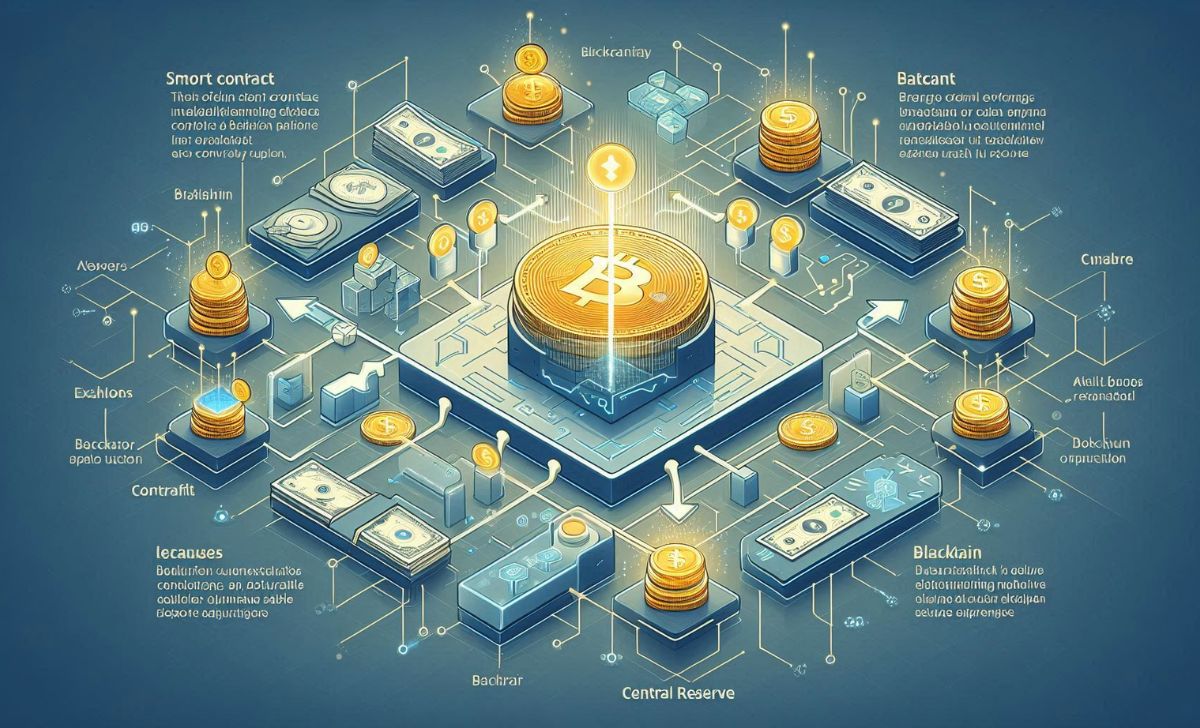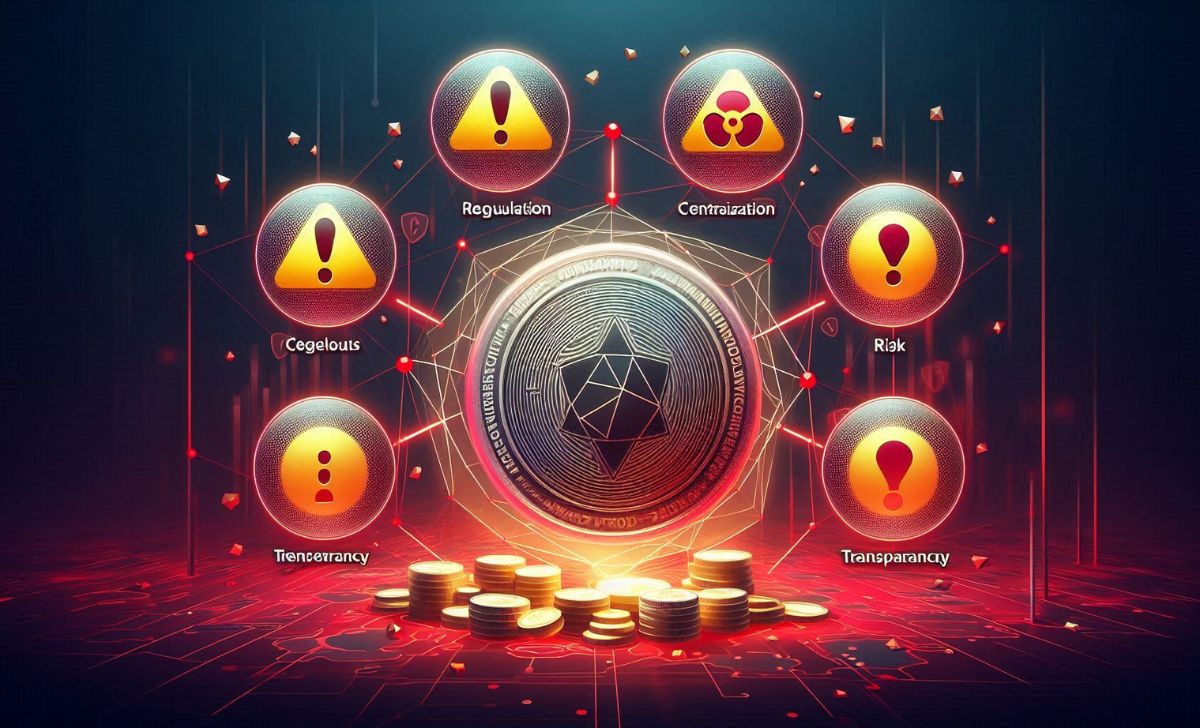Stablecoin, with its ability to maintain a stable value amid the volatile cryptocurrency market, is increasingly attracting investor attention. You might be wondering about the definition, how it works, and the future of stablecoins in the crypto ecosystem. This article from TopCoin9 will help you better understand this unique digital asset.
What Are Stablecoins?

Stablecoins are a type of cryptocurrency designed to maintain a stable value by being pegged to traditional assets such as fiat currencies (like the US dollar), commodities (like gold), or even other cryptocurrencies. While regular cryptocurrencies like Bitcoin and Ethereum are known for their price fluctuations, a stablecoin aims to reduce volatility, making it more practical for daily use.
So, what is a stablecoin in crypto? Simply put, it’s a digital asset that mirrors the value of a more stable asset, allowing users to enjoy the benefits of blockchain technology without exposure to wild price swings.
Now that you understand what stablecoins are, let’s explore the different types and how each serves a unique role in the crypto ecosystem.
Types of Stablecoins

There are several types of stablecoins, each defined by how they maintain price stability:
- Fiat-collateralized stablecoins: These are backed 1:1 by fiat currencies like USD. Examples include USDT (Tether) and USDC. They are held in reserves by centralized institutions and audited for transparency.
- Crypto-collateralized stablecoins: Backed by other cryptocurrencies, these stablecoins use smart contracts to maintain their peg. DAI by MakerDAO is a prominent example.
- Algorithmic stablecoins: These are not backed by any asset but use algorithms and smart contracts to control supply and demand. However, they are more volatile and prone to de-pegging, as seen with TerraUSD (UST).
Each type of stablecoin is backed by a different mechanism, so how exactly do they work behind the scenes? Understanding these classifications also helps clarify frequently used crypto terms such as collateral, peg, or algorithmic governance.
How Do Stablecoins Work?

The cryptocurrency stablecoin system works by anchoring its value to an external reference point:
- Fiat-collateralized stablecoins work by holding an equivalent amount of fiat in reserve.
- Crypto-collateralized stablecoins over-collateralize to account for crypto volatility.
- Algorithmic stablecoins increase or decrease supply programmatically.
This mechanism ensures that stablecoins retain their target value even amid market fluctuations. These technical processes are often controlled through smart contracts, reducing the need for centralized oversight.
Understanding how stablecoins function helps us see why they’re increasingly used in various real-world and blockchain-based applications.
Use Cases of Stablecoins

The value of stablecoins extends beyond price stability. Here’s what is the point of a stablecoin in the real world:
- Cross-border payments: Sending money globally becomes faster and cheaper, especially when compared to traditional transaction cryptocurrency methods that often involve delays and high fees.
- Trading and hedging: Traders use stablecoins to protect gains or park value during market downturns.
- Savings and lending: In DeFi platforms, users can lend or borrow using stablecoins with lower risk.
- E-commerce and payroll: Merchants and businesses can transact without worrying about volatility.
While stablecoins offer many benefits, it’s important to also consider the potential risks and limitations involved in using them.
Risks and Limitations of Stablecoins

While stablecoins offer many advantages, they also come with several risks and limitations that users should understand.
- Centralization Risk: Some stablecoins are backed by fiat and controlled by centralized companies. This goes against the spirit of decentralization that defines most blockchain-based innovations and raises concerns about transparency and trust.
- Lack of Regulation: Currently, many governments have not clearly defined rules for what is a stablecoin. This legal uncertainty can lead to problems for investors and platforms using stablecoins in everyday transactions.
- Collateral Issues: The value of a stablecoin depends on the quality and transparency of its collateral. If the backing assets lose value or are mismanaged, the stablecoin can lose its peg and collapse in value.
- Smart Contract Vulnerabilities: For algorithmic stablecoins, there’s a risk of bugs or attacks in the smart contract code. This could affect the stablecoin’s function and lead to losses.
- Limited Use Outside Crypto: While people inside crypto know what is the point of a stablecoin, outside of this world, adoption is still limited. Many people and businesses still don’t accept or trust them.
Despite these challenges, stablecoins continue to evolve. So what does the future hold for this growing class of digital assets?
The Future of Stablecoins
Stablecoins are becoming more important as crypto continues to grow. They bring the best of both worlds: the speed of crypto and the stability of fiat.
Many people ask, “What is the point of a stablecoin?” The answer is simple: it helps users avoid price swings while still using blockchain technology. That’s why stablecoins are widely used in trading, payments, and savings.
Governments are also taking notice. Some are creating their own digital currencies, inspired by the stablecoin model. This shows how strong the concept really is.
In the future, stablecoins could power global payments, support DeFi, and even connect with central bank systems. Understanding what is a stablecoin in crypto now helps you prepare for where money is going next.
Stablecoins are reshaping the way we interact with digital assets by offering stability in a volatile crypto market. Whether you’re just learning what is a stablecoin or looking to integrate them into your portfolio, understanding their mechanics and risks is essential. For more expert insights and crypto updates, visit TopCoin9 today.

As a certified blockchain security expert with over 8 years in cybersecurity, James Anderson specializes in auditing smart contracts and identifying vulnerabilities in DeFi protocols. His expertise ensures that TopCoin9 delivers reliable insights on blockchain security and risk management.
Email: [email protected]












